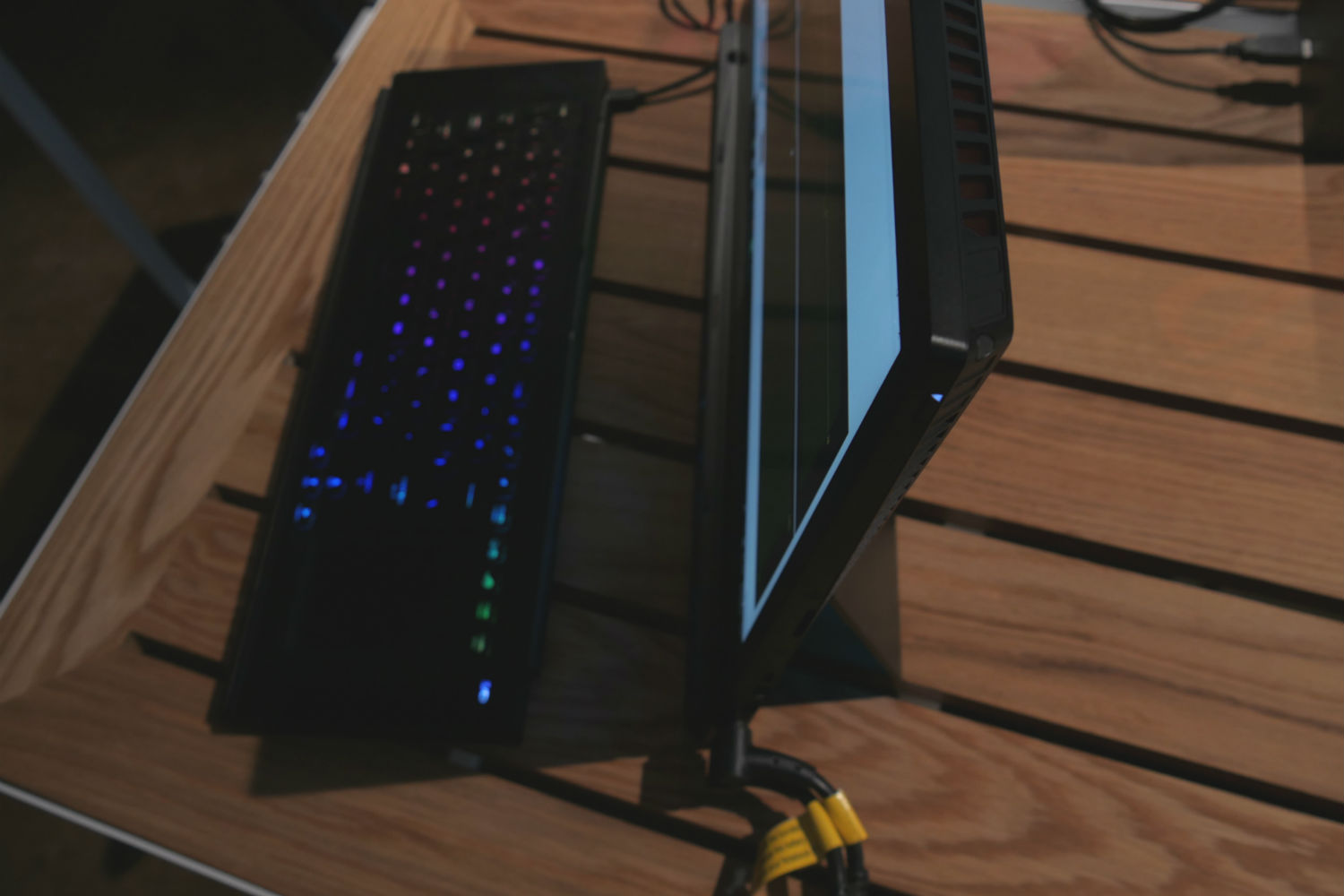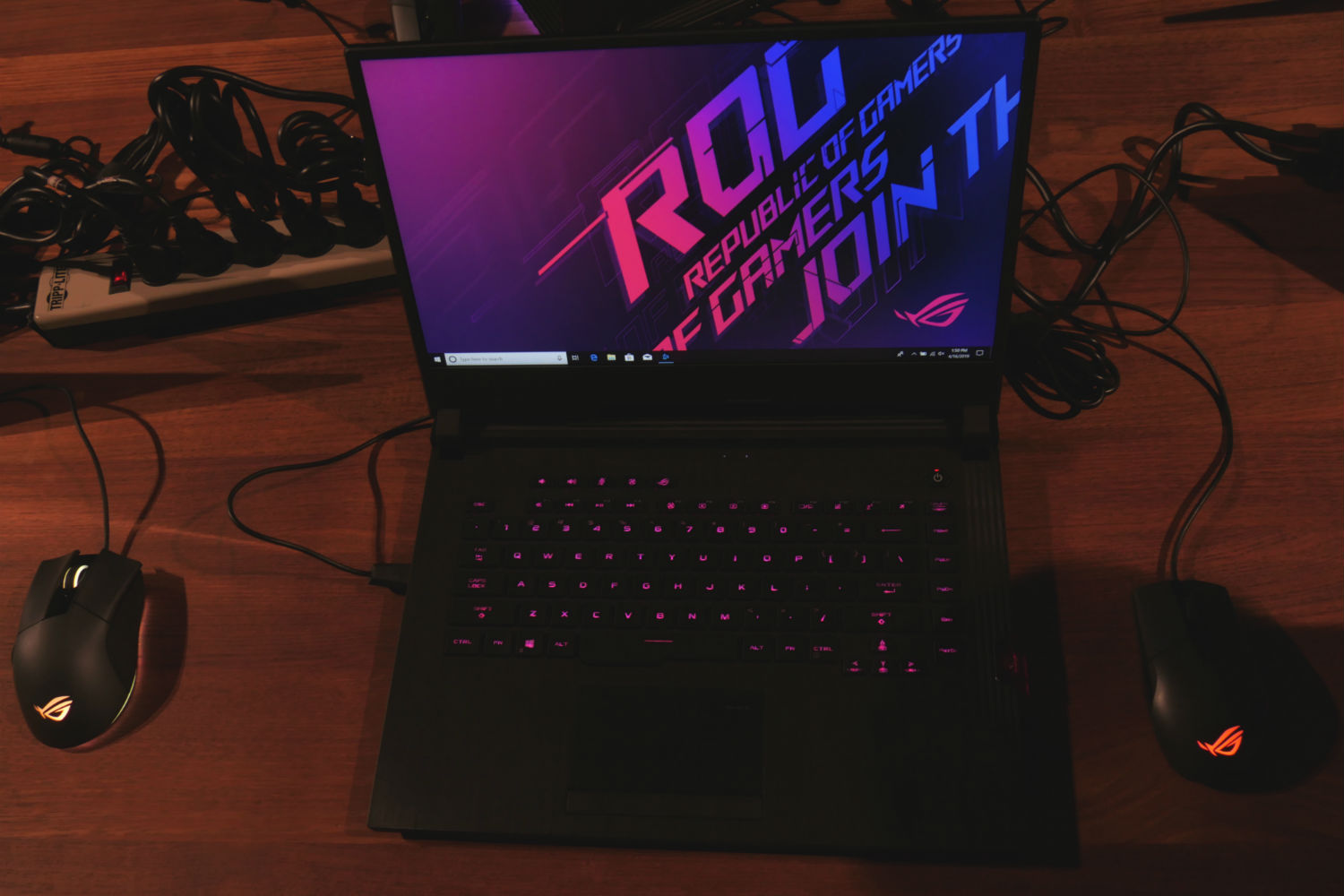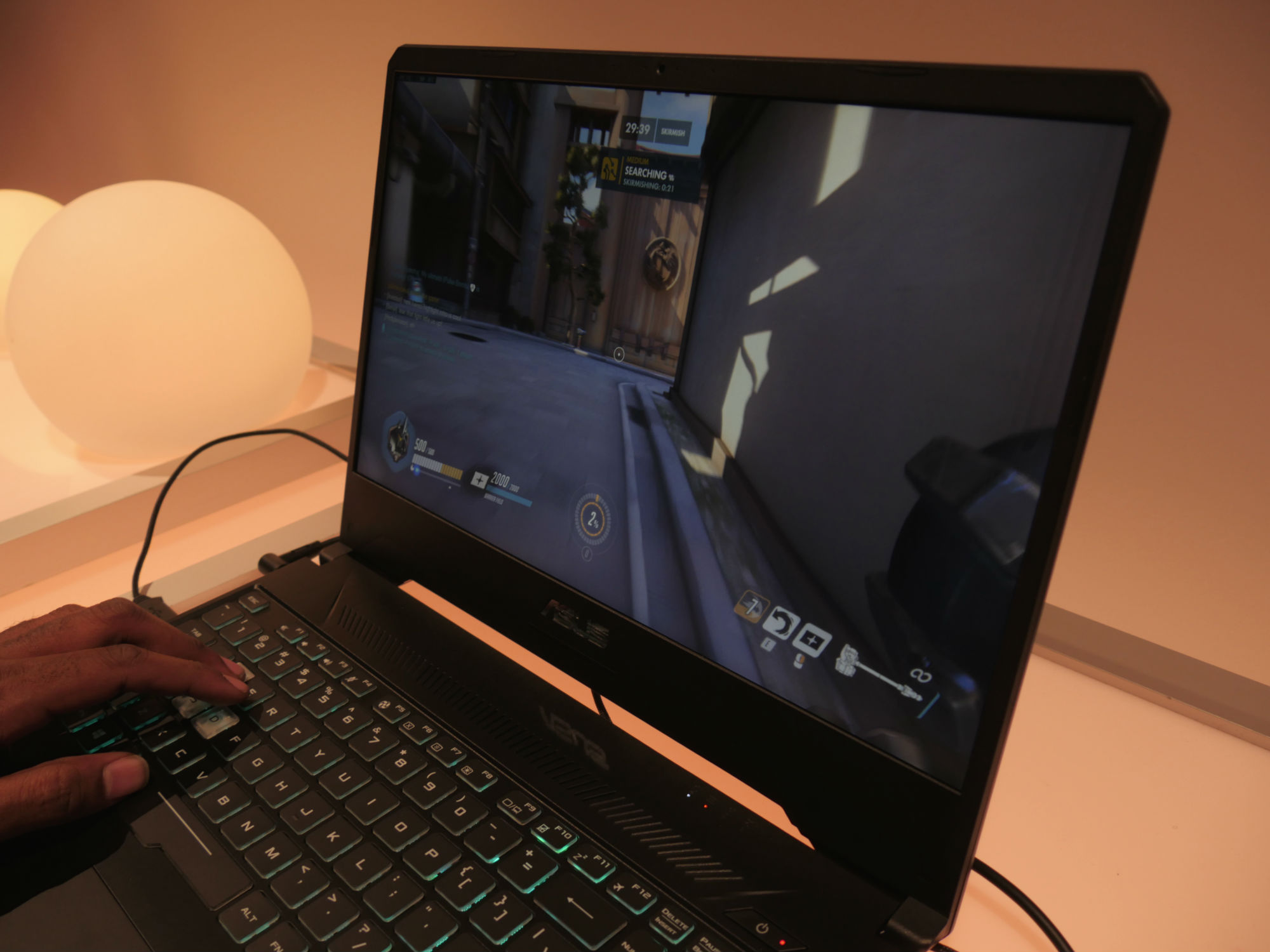Timed with announcements from Intel and Nvidia, Asus has announced a heap of gaming laptops with new silicon from both companies.
ROG is known for many things, including impressive performance and affordable prices. Understandable naming schemes, though, isn’t the brand’s strong suit. It’s most noticeable when Asus unleashes new laptops across every one of its lines, and today is one of those days. From the high-end Zephyrus to the budget-level TUF Gaming, here’s a breakdown of all the new gaming laptops from Asus.
Zephyrus
The Zephyrus line represents Asus’ very best, but it’s still broken down into three classes: S, M, and G. New to the Zephyrus S class is the GX502. Unlike the unorthodox Zephyrus S GX701, the GX502 uses a more conventional keyboard and touchpad setup. While it looks a bit more like a standard gaming laptop than the GX701, that doesn’t mean there isn’t some exciting stuff here.
First off, the body of the laptop has been reworked to be both more portable and more sturdy. It has now paired lightweight magnesium alloy with a soft-touch finish. The result is a lighter laptop that feels well-built and premium. It’s now just 0.7 inches thick and 4.19 pounds. That trimmed look applies to the bezels too, which have been cut down to reduce the overall footprint of the laptop. The thin bezels, though, haven’t left room for a webcam, which has been removed entirely.
For performance, the Zephyrus S GX502 uses a new 9th-gen Core i7-9650H processor, up to an RTX 2070 graphics card, up to 32GB of RAM, and a dual NVMe SSD with up to 1TB of capacity. Asus says it uses its ROG Boost to clock the RTX 2070 up to 1,540MHz at 115 watts, which should result in some impressive performance. Most importantly, the laptop has a screen with a 240Hz refresh rate and G-Sync, meaning you can make full use of those high clock speeds without screen tearing.
Asus also announced the Zephyrus M GU502 and Zephyrus G GA502. Both laptops have the same chassis as the GX502, but offer pretty different specs and configurations. The M GU502 is the midrange option with its RTX 2060, while the G GA502 uses a Ryzen 7 3750H processor and the new GTX 1660 Ti graphics card.
The Zephyrus S GX701 and GX531 and both received upgrades to 9th-gen processors, with special updates to each of their screens. The larger GX701 gets an option for an HDR screen, though that removes the G-Sync panel. Meanwhile, the GX531 gets the upgrade to a 240Hz refresh rate screen.
We don’t yet have firm availability information on the higher-end new Zephyrus laptops. We do know, however, that the Zephyrus G GA502 will start at $1,199, selling exclusively through Best Buy. It’ll hit shelves on April 23.
Mothership
Asus isn’t afraid to try wacky, experimental gaming projects every once and a while. With its pull-out kickstand and removable keyboard, it’s been called a Surface Pro for gamers, the Mothership might seem like one of those at first blush. But there’s more going on here than just a gimmick. More than anything else, the Mothership is about pure, unbridled power.
The only option in Asus’ lineup to feature both the RTX 2080 graphics card and overclocked Core i9-9980HK processor. That’s an eight-core, 16-thread processor capable of pushing through some serious workloads. Meanwhile, the GPU is factory overclocked to 1,880MHz at 200 watts. It’s a desktop replacement in every since of the word.
Like the Alienware Area-51m, the Mothership even comes with two power adapters for maximum performance. Asus says the standing form factor causes the Mothership to overcome limitations of chassis size or air intake. Asus even uses four heat sinks and a liquid metal compound in place of conventional thermal paste for increased heat management on the processor.
Despite looking like a 2-in-1, the Mothership isn’t thin or light. The entire package weighs over ten and a half pounds. That’s thanks to the thick, machined aluminum chassis. The keyboard can attach magnetically or be removed entirely. Once removed, the keyboard can be positioned at any distance away from the screen, adding an extra measure of adaptability to the setup.
The screen itself comes in two variations: The first is a 4K 60Hz screen with an extremely wide color gamut of 100% AdobeRGB color space. The second is more for gamers with its 1080p 144Hz screen. Both screens are G-Sync enabled.
We don’t yet know how much the Mothership will cost, though you can expect it to be expensive.
Strix
ROG is one of the biggest esports brands in the world, and the Strix laptops are made exclusively for that purpose. They’re top-of-the-line gaming laptops, made with the purpose of delivering the fastest speeds that serious esports gamers need. The Scar II and Hero III are the high-end options, and they are identical in pretty much every way. Both feature up to 240Hz refresh rate screens, RTX 2070 graphics, and 9th-gen eight-core Core i9 processors. They both also come in either 15-inch (G531) or 17-inch (G731) options.
To cool all those components, Asus has implemented a new thermal system that uses 33% thinner fan blades that results in 17% improved airflow. Asus has updated its performance profiles, which can now be automated to change depending on the active application. That could mean silent cooling while web browsing and full-tilt performance while gaming — all without having to switch modes manually.
It’s not solely about specs and performance, though. These Strix laptops still have a splash of unique gaming identity with its accent of RGB shine, glowing around the base of the chassis. You even get a windowed view of the cooling system at work near the bottom of the back of the keyboard deck. At 5.7 pounds it’s not quite as light as the Zephyrus laptops — nor is it nearly as thin.
One interesting feature made exclusively for esports professionals is the ROG Keystone, a small triangular key that can allow multiple people to use the same machine without having to switch Armoury Crate profiles or lighting customization. You can even create an encrypted “Shadow Drive” with the ROG Keystone that gives you access to these hidden files. Asus says it’ll add more useful functionality to the Keystone in the future.
So, what’s the difference these two models? Well, the Scar III has a gunmetal grey finish with a carbon-weave styling on the inner deck and the Hero III is a simpler black color.
The midrange options in the Strix line are the G G531 (15-inch) and G731 (17-inch). They’re identical to the Scar III and Hero III, minus some of the higher-end components and features. The G series Strix laptops come with up to 9th-gen Core i7 processors, RTX 2070, and a 144Hz refresh rate display. It lacks the ROG Keystone, but it does still have the wrap-around light bar, slim bezels, and streamlined design.
We don’t have finalized availability on the Scar III and Hero III, but the Strix G G531 and Strix G G731 will both be available at Best Buy on April 23 starting at $999.
TUF Gaming
At the bottom of the totem pole are the TUF Gaming laptops, which aren’t given the privilege of ROG branding. They do, however, offer some impressive performance at discounted prices. New this time around are the FX505 (15-inch) and FX705 (17-inch), two size options in the same design.
Asus has chosen to use AMD processors in these laptops, implementing the quad-core Ryzen 7 on the CPU side of things. For graphics, you get the new GTX 1660 Ti, built on Nvidia’s Turing architecture. Asus says there will be a number of storage options, ranging from SSDs up to 512GB to 1TB HDDs.
Nvidia says the GTX 1660 Ti can push out up to 100 FPS (frames per second) in modern battle royale games like Fortnite or Apex Legends at High settings in 1080p. Fortunately, Asus is including up to 120Hz refresh rate screens to take full advantage of those framerates. You won’t find the slick design or advanced features in the other lines here, just a solid, performance-driven value offering. We don’t have firm pricing yet, but you can expect these TUF laptops to be available in the second quarter of 2019.



























